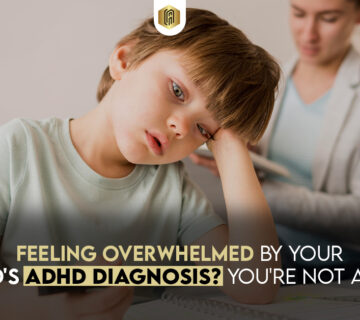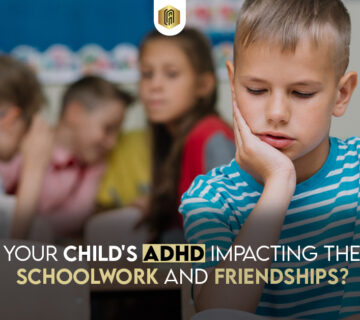About 23 million people around the world have schizophrenia, which is about 1 in 345. This complicated mental health disorder has a big effect on both the people who have it and their families, making it challenging for them to do everyday things and enjoy life. However, a thorough understanding of the subtypes of schizophrenia can greatly enhance treatment results and patient care.
This complete guide looks at the different kinds of schizophrenia and gives healthcare professionals, patients, and families evidence-based information. By studying different types of schizophrenia in depth, we hope to reduce stigma and provide clinically useful information that improves understanding and treatment.
We will look at the clinical definition of schizophrenia, its historical and current classification systems, specific subtypes, the causes and risk factors, diagnostic procedures, and evidence-based treatment options and coping strategies.
Clinical Definition and Summary of Schizophrenia
Schizophrenia is a chronic mental disorder that impairs cognition, perception, and behavior. The condition presents as a disconnection from reality, profoundly affecting an individual’s capacity to operate in social, occupational, and personal domains.
Many people mistakenly think that schizophrenia and dissociative identity disorder (formerly known as multiple personality disorder) are the same thing. This is not correct from a medical perspective. People with schizophrenia don’t have multiple personalities; they break from reality. To reduce stigma and promote accurate understanding, it is important to correct these misunderstandings.
The symptoms of schizophrenia are divided into three main groups:
Positive symptoms are abnormal experiences, such as delusions, hallucinations, and disorganized thinking.
Negative symptoms are when normal functions are missing or lessened. For example, they can include less emotional expression, less motivation, and less social interaction.
Cognitive symptoms impact cognitive processes, encompassing deficits in memory, attention, and executive functioning.
Schizophrenia manifests as a spectrum disorder characterized by considerable individual variability in symptomatology and severity. While older classification systems identified different types of schizophrenia, current diagnostic guidelines like the DSM-5 view it as one disorder that looks at symptoms on a spectrum. Still, knowing about traditional subtypes is useful for planning treatment and teaching patients.
The changes in how schizophrenia is classified
Older versions of the Diagnostic and Statistical Manual of Mental Disorders (DSM-IV) and other historical psychiatric classification systems put schizophrenia into different subtypes based on the most common symptoms. This categorical approach made it easier for doctors to talk to each other and plan treatments by giving them standardized ways to describe things.
The release of DSM-5 in 2013 marked a significant shift in the classification of schizophrenia. The manual did away with traditional subtypes and instead used a dimensional approach to measure how severe symptoms are in different areas. This change was made because more evidence showed that schizophrenia symptoms often cross over into traditional categories and that dimensional assessment gives a more accurate picture of what is going on in the clinic.
The dimensional approach focuses on severity specifiers instead of strict categorical boundaries. This makes it easier to assess patients and plan treatments that are tailored to their needs. This method better reflects the diverse ways that schizophrenia can show up while still being useful in a clinical setting.
Even though they are no longer part of official diagnostic criteria, traditional schizophrenia subtypes are still useful for learning and treating patients. These classifications still help with treatment and help us understand how the disorder can show up in different ways.
International classification systems, such as the ICD-11 from the World Health Organization, have implemented analogous dimensional frameworks while integrating symptom specifiers to ensure global diagnostic uniformity and clinical significance.
Thorough Examination of Conventional Schizophrenia Subtypes
Even though current diagnostic systems don’t officially recognize them anymore, traditional schizophrenia subtypes are still useful for understanding the different ways the disorder can show up. These five historical categories exemplify distinct expressions of the same fundamental condition.
It is crucial to recognize that individuals may exhibit symptoms across various subtypes, illustrating the intricate and diverse characteristics of schizophrenia. The following analysis scrutinizes each traditional subtype comprehensively.
Paranoid schizophrenia is the most common type.
Paranoid schizophrenia is the most common subtype. It is mostly characterized by delusions and auditory hallucinations, but the person’s cognitive functioning stays mostly intact.
The main clinical signs are:
Delusions that are very noticeable and often grandiose or persecutory in nature
Auditory hallucinations, usually manifesting as critical or authoritative voices
Increased anxiety and irritability
Keeping cognitive abilities and organized thought processes intact compared to other subtypes.
Functional impact: Paranoid schizophrenia has a profound effect on interpersonal relationships due to widespread mistrust and suspicion. Persistent anxiety and preoccupation with delusional beliefs may impair occupational functioning.
Prognosis: With suitable treatment, individuals with paranoid schizophrenia frequently exhibit positive outcomes owing to maintained cognitive functioning. Early intervention and compliance with treatment protocols correlate with enhanced long-term prognosis.
Disorganized (Hebephrenic) Schizophrenia: Impairment of Cognitive and Behavioral Functions
Disorganized schizophrenia, formerly known as hebephrenic schizophrenia, is marked by profound disorganization in cognitive processes, verbal expression, and conduct, along with inappropriate or diminished emotional expression.
Clinical presentation generally encompasses:
Disorganized speech patterns, such as “word salad” (speech that doesn’t make sense and has logical gaps)
Significant impairment in daily living activities, including deficiencies in self-care, is often present.
Inappropriate affect, frequently exhibited as frivolous or juvenile conduct in serious situations
Severe dysfunction in social and occupational domains
Age of onset: This subtype often appears in the teenage years or early adulthood, and an earlier onset is usually linked to a worse outcome.
Functional impact: The extreme disorganization that is typical of this subtype leads to serious problems in social and work situations, mostly because of trouble communicating and acting inappropriately.
Treatment considerations: All-encompassing treatment strategies that include medication, behavioral therapy, and organized support services can enhance functional outcomes.
Catatonic Schizophrenia: Motor and Behavioral Irregularities Catatonic schizophrenia is marked by significant psychomotor disturbances, varying from stupor to hyperactivity. Because of advances in psychiatric treatment, this subtype is becoming less common.
The main signs are:
Catatonic stupor: significant psychomotor immobility and lack of responsiveness
Excessive motor activity that seems pointless and isn’t affected by outside factors
Extreme negativity or silence
Strange voluntary movements, like holding unusual positions for long periods of time
Echolalia (repeating what others say) or echopraxia (copying what others do)
Precipitating factors: Acute psychological stress or medical conditions can induce catatonic episodes in vulnerable individuals.
Clinical significance: The infrequency of this subtype in modern clinical practice indicates advancements in psychiatric medications and treatment approaches.
Undifferentiated Schizophrenia: Presentation of Mixed Symptoms
When a person meets the general criteria for schizophrenia but doesn’t fit neatly into any of the subtypes, they are said to have undifferentiated schizophrenia.
Distinctive attributes:
A combination of delusions, hallucinations, and disorganized speech or behavior
No one symptom domain stands out.
Symptoms may vary over time, possibly developing into more distinct manifestations.
Clinical prevalence: This subtype is commonly encountered in clinical settings, typically indicating either an initial phase of illness before the emergence of more distinct patterns or a genuinely mixed presentation.
Diagnostic utility: The undifferentiated category recognizes the diverse characteristics of schizophrenia while preserving diagnostic accuracy.
Residual Schizophrenia: Management of Post-Acute Symptoms
Residual schizophrenia refers to a stage of the disorder that occurs after acute psychotic episodes, marked by the continuation of negative symptoms and a scarcity of positive symptoms.
Some of the clinical features are:
Ongoing negative symptoms like emotional numbness, social withdrawal, and diminished motivation
Minimal positive symptoms, like delusions or hallucinations.
Diminished positive symptoms that may intermittently reemerge
Substantial functional impairment, notwithstanding diminished acute symptomatology.
Treatment focus: Long-term management focuses on rehabilitation, teaching social skills, and stopping relapse by continuing medication and getting help from others.
Prognostic considerations: This phase frequently signifies a chronic stage necessitating continuous comprehensive care and support services.
Causes and Risk Factors in the Development of Schizophrenia
Schizophrenia arises from intricate interactions between genetic predispositions and environmental influences. No singular causative factor has been discerned, illustrating the multifactorial characteristics of this disorder.
Biological factors encompass:
Genetic predisposition: A family history greatly raises the risk, with concordance rates of about 10% for first-degree relatives and up to 50% for identical twins.
Neurochemical imbalances: Dysregulation of neurotransmitter systems, especially dopamine, glutamate, and GABA, plays a role in the emergence of symptoms.
Neurodevelopmental factors: Complications during pregnancy and shortly after birth, such as maternal infections, nutritional deficiencies, and birth complications, heighten risk.
Environmental risk factors include:
Prenatal exposures: Viral infections in the mother, lack of proper nutrition, and stress during pregnancy
Using substances, particularly high-potency cannabis, at a young age greatly raises the risk.
Psychosocial stressors include childhood trauma, urban living, and stress associated with migration.
Social factors encompass isolation, discrimination, and ongoing stress.
Other things that can increase your risk are:
Older fathers were at the time of conception.
Problems with childbirth that happen during pregnancy
Early childhood hardship
Drug abuse, especially of cannabis and amphetamines
Urbanization and social disadvantage
Some subtypes might exhibit distinct risk factor profiles, with paranoid variants possibly displaying more robust genetic correlations.
Clinical Evaluation and Diagnostic Assessment
No one test can tell if someone has schizophrenia, so a full clinical assessment is needed to make the diagnosis. The diagnostic process includes thorough clinical interviews, behavioral observation, and a systematic assessment of symptoms.
The diagnostic process encompasses:
Comprehensive clinical interview: Thorough evaluation of psychiatric history, symptom initiation and development, and functional disability.
Symptom assessment: A methodical evaluation employing standardized criteria (DSM-5 or ICD-11), necessitating symptom persistence for a minimum duration of six months.
Differential diagnosis: Elimination of substance-induced psychosis, medical conditions, and other psychiatric disorders.
Collateral information: Contributions from family members and significant others yield valuable observational data.
Tools and tests for diagnosis:
Structured Clinical Interview for DSM-5 (SCID-5)
The Positive and Negative Syndrome Scale (PANSS)
Brief Psychiatric Rating Scale (BPRS)
Global Assessment of Functioning (GAF)
Differentiating subtypes: Although traditional subtypes are no longer officially recognized, understanding them can aid in treatment planning and monitoring symptoms.
Things to think about for early intervention: Quickly finding and starting treatment greatly improves long-term outcomes and functional recovery.
Family involvement: Involving family members in the assessment process improves the accuracy of the diagnosis and the effectiveness of the treatment.
Treatment Approaches for Different Types of Schizophrenia That Are Based on Evidence
Schizophrenia treatment uses a wide range of individualized methods, including medications, psychosocial therapies, and rehabilitation services. Even though there is no cure, treatments that are based on evidence work well to control symptoms and improve functional outcomes.
Pharmacological interventions:
Antipsychotic medications are the first-line treatment for positive symptoms. Atypical antipsychotics are usually preferred because they have fewer side effects.
When it comes to subtypes, catatonic presentations may need special treatments like benzodiazepines or electroconvulsive therapy.
Medication management involves regularly checking the effectiveness of the medication, monitoring for any side effects, and adjusting the dosage based on the individual’s response.
Psychotherapeutic interventions:
Cognitive Behavioral Therapy (CBT): An evidence-based method for treating delusions, hallucinations, and adverse symptoms.
Family therapy: Psychoeducational methods that decrease expressed emotion and enhance family resilience.
Social skills training: Structured programs that help people get along with others and do everyday tasks better
Psychosocial rehabilitation:
Vocational rehabilitation: job training and programs that help people locate work
Help with housing: training in independent living skills and assisted living arrangements.
Case management ensures the coordination of services and assists individuals in adhering to their treatment plans.
Lifestyle changes:
Regular exercise and advice on what to eat
Treatment and prevention of substance abuse
Ways to relax and deal with stress
Setting up a sleep routine and maintaining proper sleep hygiene
People frequently ask
What are the first signs that someone might have paranoid schizophrenia?
Early signs include becoming more suspicious, withdrawing from social situations, having trouble hearing things, and having trouble doing well at work or in social situations. For early intervention, it is important to obtain a professional evaluation right away.
Is it possible for schizophrenia subtypes to change over time?
Yes, the way symptoms show up may change over the course of the illness. People may first show mostly paranoid symptoms, but as the disorder progresses, they may start to show disorganized symptoms. This illustration shows how the disorder changes over time.
Is schizophrenia genetically influenced?
Schizophrenia possesses a substantial genetic component, with heritability estimates around 80%. However, genetic predisposition necessitates environmental triggers for manifestation, and numerous individuals with familial history do not develop the disorder.
What makes schizophrenia different from bipolar disorder?
Schizophrenia is marked by enduring psychotic symptoms and a deterioration in functioning, whereas bipolar disorder is defined by intermittent mood disturbances. However, there is some overlap in diagnoses, so a professional differential diagnosis is needed.
How does substance use affect schizophrenia?
Using drugs, especially cannabis and stimulants, can cause psychotic episodes, make symptoms worse, and make treatment less effective. Treatment for substance abuse is necessary for the best results.
Can people with schizophrenia live on their own?
Many people with schizophrenia can live on their own, keep a job, and make meaningful connections with others if they receive the right treatment and support. Comprehensive treatment approaches lead to the best recovery outcomes.
What is the best way for families to help a loved one with schizophrenia?
Family support entails comprehending the disorder through education, sustaining realistic expectations, promoting treatment adherence, offering emotional support without fostering dependence, and engaging in family therapy when deemed necessary






No comment